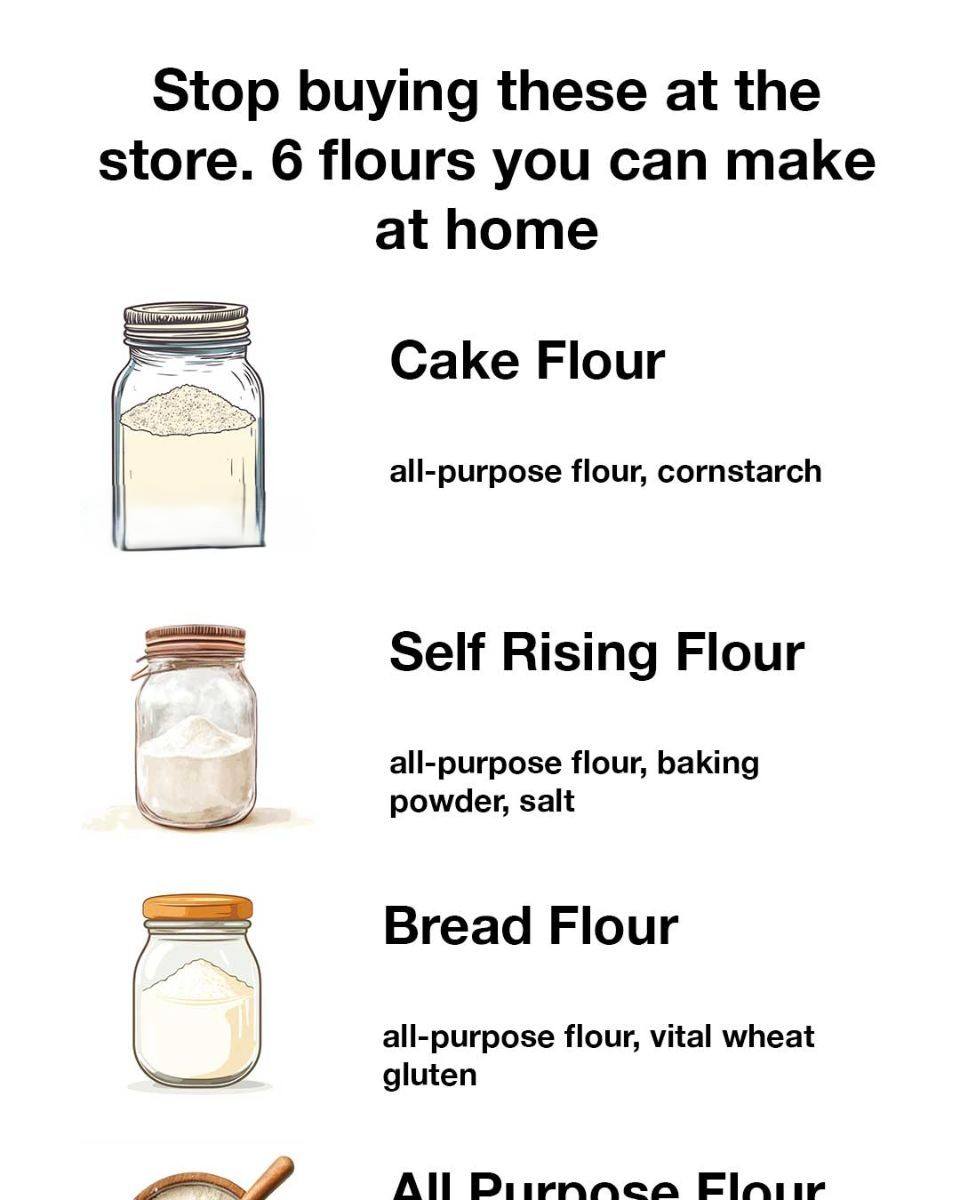ADVERTISEMENT
#### Benefits of Homemade Almond Flour
– **Nutrient-dense**: Almond flour is rich in healthy fats, protein, and vitamins, making it a much more nutritious option than traditional wheat flour.
– **Naturally gluten-free**: This flour is ideal for those with gluten sensitivities or those following a gluten-free diet.
– **Low in carbs**: Almond flour is perfect for those following low-carb, keto, or paleo diets.
#### How to Use Almond Flour
Almond flour is versatile and can be used in a variety of recipes such as cookies, cakes, muffins, and bread. It works well as a coating for fried foods or as a thickener for sauces and gravies. When using almond flour in baking, it can often be substituted one-to-one for traditional flour.
—
### 3. **Coconut Flour**
Coconut flour is another popular gluten-free flour, and it is a great option for those looking to reduce their carb intake or follow a paleo or keto diet. Made from dried coconut meat, this flour is high in fiber and protein and has a subtle coconut flavor that enhances baked goods.
#### How to Make Coconut Flour at Home
Making coconut flour requires a bit more effort than other flours, but the result is well worth it. You will need fresh or dried coconut meat, which can either be bought or harvested from a coconut.
1. **Step 1: Extract Coconut Meat**
If you have a fresh coconut, break it open and carefully remove the meat. Be sure to remove any brown skin attached to the coconut flesh.
2. **Step 2: Dry the Coconut Meat**
The coconut meat must be dried before grinding. Spread the coconut meat on a baking sheet and dry it in the oven at a low temperature (around 100°F) for 6 to 8 hours, or until it’s completely dry. Alternatively, you can use a dehydrator.
3. **Step 3: Grind the Coconut**
Once the coconut meat is fully dried, grind it in a food processor or high-speed blender. Continue grinding until you achieve a fine, flour-like texture.
4. **Step 4: Sift and Store**
Sift the flour to remove any larger pieces, and store the coconut flour in an airtight container in a cool, dry place.
#### Benefits of Homemade Coconut Flour
– **High in fiber**: Coconut flour is rich in dietary fiber, which is great for digestion and helps to regulate blood sugar levels.
– **Gluten-free and grain-free**: Like almond flour, coconut flour is naturally gluten-free, making it suitable for those with sensitivities or those on a gluten-free diet.
– **Low-carb**: Coconut flour is lower in carbohydrates than most traditional flours, making it ideal for keto and low-carb diets.
#### How to Use Coconut Flour
Coconut flour is very absorbent, so it requires more liquid in recipes than regular flour. Use it for pancakes, muffins, cakes, and cookies. It also works as a thickener for sauces and soups.
—
### 4. **Rice Flour**
Rice flour is an essential ingredient in gluten-free baking and cooking. It’s used in many Asian dishes, like rice noodles and dumplings, and in gluten-free flour blends. Rice flour has a neutral flavor, making it versatile in both sweet and savory recipes.
#### How to Make Rice Flour at Home
Making rice flour requires **white or brown rice**, which you can find at most grocery stores.
1. **Step 1: Rinse the Rice**
Rinse the rice under cool water to remove any excess starch.
2. **Step 2: Dry the Rice**
Spread the rice out on a baking sheet and dry it in the oven at a low temperature (around 100°F) for 2 to 3 hours. This step is important to ensure that your rice flour won’t turn into rice paste when ground.
3. **Step 3: Grind the Rice**
Use a high-speed blender or a grain mill to grind the rice into a fine flour.
4. **Step 4: Sift and Store**
Sift the rice flour to remove any large bits, and store it in an airtight container.
#### Benefits of Homemade Rice Flour
– **Affordable**: Rice is relatively inexpensive, and homemade rice flour costs a fraction of store-bought versions.
– **Gluten-free**: Rice flour is an essential ingredient in gluten-free baking and cooking.
– **Easy to make**: Rice flour is simple to make, with minimal equipment and ingredients needed.
For Complete Cooking STEPS Please Head On Over To Next Page Or Open button (>) and don’t forget to SHARE with your Facebook friends
